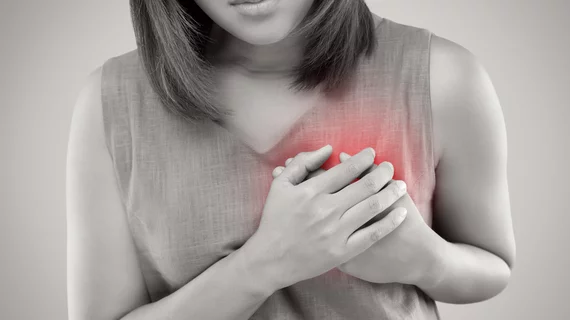Could chemo trigger Takotsubo in cancer patients?
Heart patients who suffer Takotsubo cardiomyopathy (TC) could face longer hospital stays, poorer outcomes and more than $150,000 in hospital bills if they’re undergoing chemotherapy simultaneously, researchers report in the American Journal of Cardiology.
The annual incidence of TC in the U.S. is on an upward trajectory, first author Rupak Desai, MBBS, and colleagues wrote in the journal. While physicians recorded 111 cases of TC per million residents in 2007, that number jumped to 438 per million by 2013.
“Unfortunately, TC is associated with significant morbidity and mortality with an estimated in-hospital mortality rate ranging from 4.5-5.6 percent,” Desai, of the Atlanta VA Medical Center, and coauthors said. “In addition to the commonly identified precipitating factors, cancer has also been thought to be a potential precipitating factor for the development of TC, ranging from 4-29 percent of cases.”
Desai and his colleagues explored that idea in a large group of chemo patients enrolled in the National Inpatient Sample database. Using information from between 2010 and 2014, the team identified nearly 1.07 million chemotherapy-related hospitalizations, 562 of which involved Takotsubo cardiomyopathies.
The authors said patients who experienced TC were more likely to present with other comorbidities, like diabetes, liver disease or renal failure, and were charged on average $116,490 more for hospital stays than chemo patients who didn’t develop TC (a mean of $162,825 compared to $46,335). TC patients were also more likely to stay in the hospital longer (17 days compared to 5).
“Whether the development of TC in patients receiving chemotherapy is related to the underlying malignancy, a direct side effect of chemotherapy, catecholamine surge from either a physical or emotional stressor or a combination of etiologies is difficult to ascertain,” Desai et al. wrote. “However, a high non-elective admission rate (72.1 percent) in the TC patients suggests that it could mainly be due to a direct side effect of chemotherapy.”
In their research, the team also found female gender was associated with a nearly 2.5-fold increased risk of developing TC. In those who did, Asian race, older age, urban areas and teaching hospitals seemed to raise mortality odds.
The authors said the price tag associated with a combination of chemo and TC raises “major concerns” and begs for further research. Still, their use of the NIS means the team’s results can be used and applied to broader populations.
“We observed an overall increasing nationwide trend in TC incidence among adult patients receiving chemotherapy, which adds to significantly increased in-hospital mortality and healthcare finances,” Desai and colleagues wrote. “Many of the patients receiving inpatient chemotherapy could have been exposed to potentially cardiotoxic regimens, and considering TC—in the setting of new-onset cardiomyopathy—as one of the sequels of chemotherapy allows for resourceful preventive strides to be investigated.”

